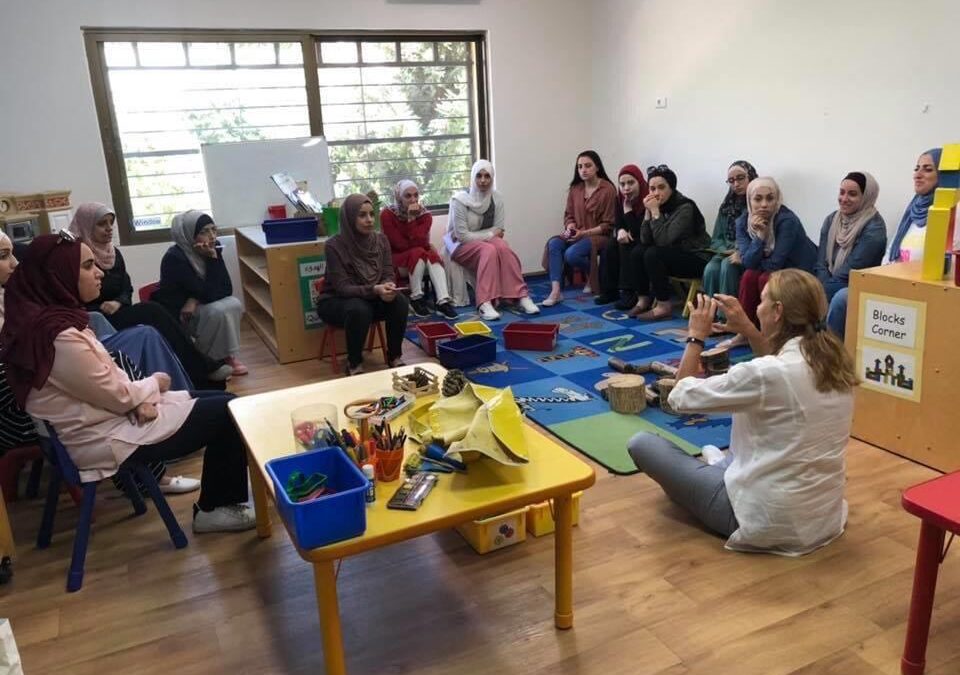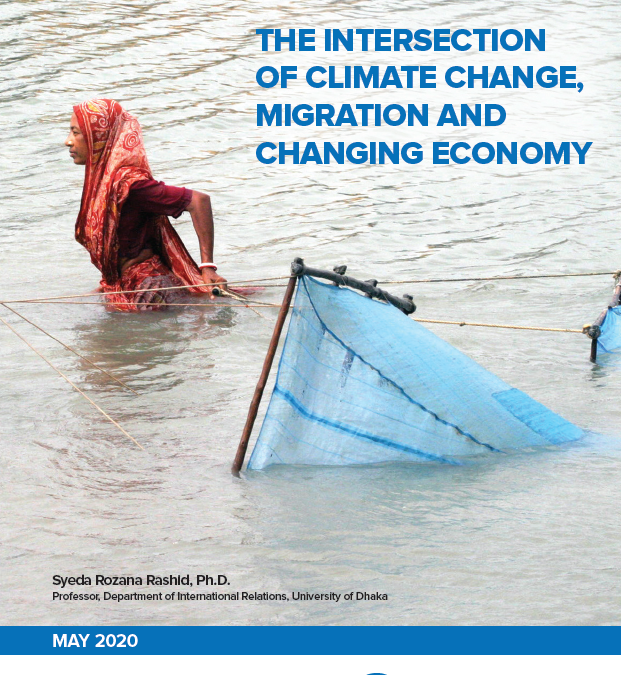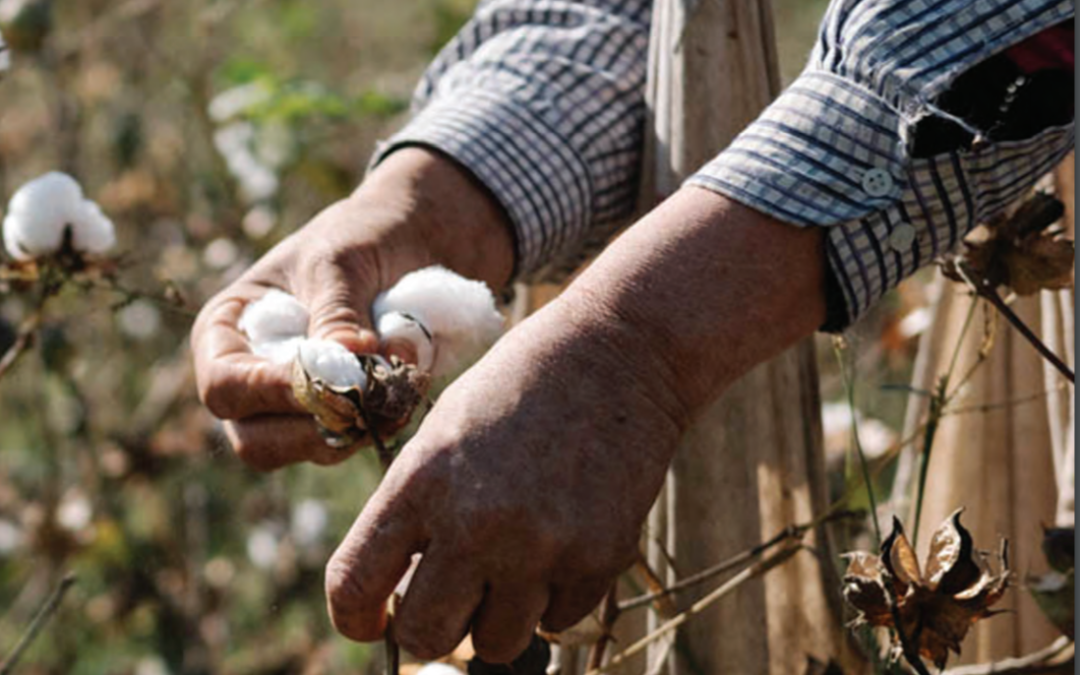
Jul 16, 2020
Women’s rights groups and worker advocates in Jordan are hailing the re-opening of child care centers, a move they say enables women running small day care centers or working in larger nurseries to support themselves, while ensuing safe care for the children of women returning to their jobs after the novel coronavirus closures.
The more than 1,400 day care facilities across the kingdom opened July 4 under strict safety measures to limit the spread of COVID-19, including masks, social distancing and weekly exams for the children.
Since the beginning of the coronavirus crisis, “we called on the government to pay attention to women’s work conditions and labor rights in general, day care workers in particular,” says Randa Naffa, co-founder of SADAQA, an organization founded by working parents to advocate for family-friendly work environments.
As SADAQA campaigned to open day care centers, the organization joined with the Women in Business Arabia Network to create an online platform that shed light on the challenges day care center workers face, and spearheaded a Facebook campaign urging the opening of day care facilities.
“Women’s participation in the labor market is very weak, and the absence of the day care facilities is one of the reasons why women don’t join the labor market or withdraw from it,” says Naffa.
Women Back to Work Without Safe Places for the Children
Day care centers, which serve 50,000 children, remained closed weeks after other private-sector businesses were allowed to open, even though “working women had no choice but to go back to work,” says Tasneem Dudin, owner of a day care facility. Without access to licensed facilities, women were faced with a choice to leave their children alone at home or send them to unregistered nurseries that may not be following safe health practices, she says.
“Day care facilities are usually small projects for women who are struggling and facing the economic and social challenges,” Dudin says. Most facilities do not have bank accounts and typically employ workers day to day. Dudin estimates that some 90 percent of the facilities could not pay rent or workers’ wages after they were closed during the lockdown.
“The owners of these facilities couldn’t pay wages because of the economic crisis and many workers have been laid off and ended up unemployed,” says Mohammad Ersan, the host of Workers of the Country (عمال البلد), a worker-centered radio program launched last year in cooperation with the Solidarity Center. The June show featured Naffa, Dudin and others who discussed the need to open child care facilities.
Saba Yaseen says she cared for her two children, ages 5 and 2, throughout the lockdown as she teleworked from home, and her husband had to take off work to care for them when she had to leave for urgent matters. But once back at work, she would have not choice but to send the children to unregistered facilities if the formal facilities did not open, she said on the radio program.

Jul 2, 2020
Underscoring the immediate risk of severe climate-induced weather events in South Asia, Cyclone Amphan last month slammed into the coast of eastern India and southern Bangladesh, destroying thousands of homes and killing at least 88 people. A new Solidarity Center report points to other, longer-term risks for workers in the region as a result of climate change, including forced job changes and migration, and increased economic vulnerability.
As many as one in every seven–or at least 16 million—people in Bangladesh could be on the move by 2050, potentially causing the largest forced migration caused by climate change in human history. Bangladesh is one of the 10 countries most vulnerable to climate change, at risk from climate disasters such as floods and cyclones. Situated on a floodplain, with a low-lying coastline and a host of rivers, the country and its people are threatened by rising sea levels, flooding, riverbank erosion, cyclones, storm surges and ever-hotter summers. These phenomena are exacerbated by climate change and contribute to loss of livelihoods, migration and poverty.
Against this backdrop, the Solidarity Center conducted a study investigating the intersection of climate change, economic activity and migration in Khulna and Jashore, Bangladesh. The study used primary and secondary sources of data, including surveys and first-person interviews with 50 Khulna- and Jashore-based workers who were employed in shrimp and fish processing and hatcheries, transport and domestic work sectors, and returnee migrant workers.
The report finds that increased salinity and flooding has driven people of both areas into new economic activities—primarily away from previously profitable farming into poverty-wage, non-farm economic activities that study participants describe as a hand-to-mouth existence. Cross-border migration of people from Khulna and Jashore to India for better economic prospects was found to be common and recurring, with international migration growing. Workers forced to transition into new jobs were found to lack information, training and financial resources to adapt to employment changes, and were mostly relying on friends and family for information and other types of resources to find new jobs. There was a low level of understanding about climate change and how it impacts their own livelihoods and the local economy.
“Climate change is forcing already-vulnerable people into often exploitative, precarious and poorly paid work, including migrating abroad for unsafe jobs where their rights are often unprotected,” says Solidarity Center Senior Program Officer Sonia Mistry.
The report offers recommendations to mitigate the impact of climate change on workers in the region, including raising awareness among residents about the impact of climate change; devising strategies to recover bodies of water and develop equitable and sustainable land-use solutions; providing skills training for workers; and reducing wage discrimination between women and men.

Jun 26, 2020
A new report on Uzbekistan’s 2019 cotton harvest by Uzbek Forum for Human Rights documents progress toward ending—but not eradication—of state-sponsored forced labor, says the Cotton Campaign.
The report, “Tashkent’s Reforms Have Not Yet Reached Us,” finds that a state-imposed cotton quota, labor shortages, lack of fair and independent recruitment channels, and weak accountability systems contribute to the continuation of forced labor in Uzbekistan’s cotton fields—and that broader reform efforts in the country are being limited by slow progress on civil society freedoms.
The report’s findings are based on more than 100 in-depth and hundreds of short interviews with people involved in the cotton harvest, as well as field visits, farm monitoring in six regions, and data and analysis from a nationwide online survey conducted in partnership with the Solidarity Center and public polling/research firm RIWI Corp.
Employees of state and privately owned enterprises in interviews consistently reported being unable to refuse orders to pick cotton by government officials or employers for fear of dismissal or other job-related consequences. About half of online survey respondents said they could not refuse when asked to go to the fields or pay for a replacement picker. This testimony underscores the pressing need to establish effective recruitment systems free from interference or coercion by the government or the authorities, says the Uzbek Forum for Human Rights.
The report also documents that reform of civil society freedoms has lagged far behind the pace of reforms in other key areas, inhibiting the freedom of citizens to form civic associations such as nongovernmental organizations (NGOs) and independent trade unions empowered to fight forced labor in Uzbekistan. The report notes with concern the small number of independent, self-initiated NGOs registered in the country and the high number of rejections for registration.
“Independent NGOs, unions and civic activists have a central role to play in the reform process in promoting transparency and accountability,” says Solidarity Center’s Eastern Europe/Central Asia Director, Rudy Porter. “There is a pressing need to guarantee basic civic freedoms to empower activists to conduct independent monitoring and ensure labor practices are in line with international standards.”
The U.S. State Department’s annual Trafficking in Persons report yesterday specified that Uzbekistan will remain on its Tier 2 watchlist because the country does not yet meet the minimum standards set out in the U.S. Trafficking Victims Protection Act. The report noted that, “During 2019, the government continued to demand farmers and local officials fulfill state-assigned cotton production quotas or face penalties, which caused local officials to compel work in the annual cotton harvest.”
The Cotton Campaign, of which Solidarity Center is a member, is a global coalition of human rights, labor, responsible investor and business organizations dedicated to eradicating child and forced labor in cotton production in Uzbekistan and Turkmenistan. A Cotton Campaign roadmap for the government of Uzbekistan to dismantle the forced labor system of cotton production was presented to government officials during high-level meetings in Tashkent in May 2018.
Photo: Tashkent region, 2019. Credit: Uzbek Forum for Human Rights



